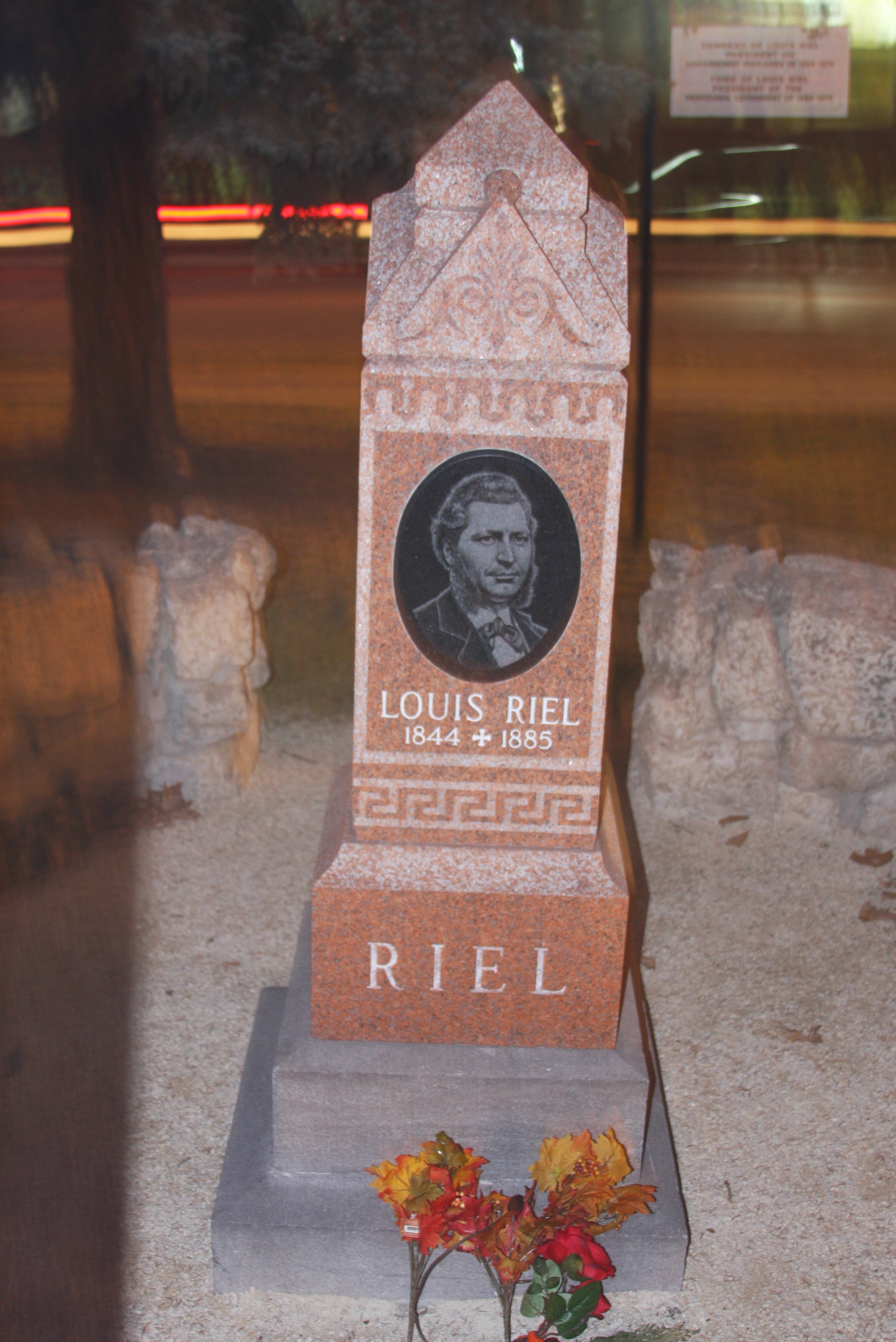Twenty policemen stood guard in the chilly morning under a clear sky. Their ghostly breath was visible as they waited for the prisoner to ascend to the gallows. It was shortly after eight o’clock in the morning and a firm, hemp rope hung without stirring in the calm air. Although there was a small crowd gathered at the police barracks near Regina, the loudest sounds were the prayers, guided by members of the clergy, from the man under sentence of death.
The prisoner’s feet were kept warm in moccasins and his upper body clad in a woollen shirt and collar and a black coat, with grey tweed pants between his feet and torso. The convict mounted the wooden platform to meet his executioner, whose visage was concealed behind a mask. Intoning continuously “Je me confie en Dieu,” the condemned man’s arms were tightly bound, and he then proceeded down six steps to stand upon hell’s trapdoor, whereon his own face was covered with a white hood. Before his life force was jerked violently into oblivion, Louis Riel asked forgiveness from all men, and forgave those who wronged him.
Deputy Sheriff Gibson later destroyed the noose to prevent opportunists from trying to seduce would-be disciples of the condemned resistance leader. Although the true rope may have vanished, Annie Soule, the daughter of an architect in the locale of the execution, told of a man going door-to-door to sell pieces of that same rope. Nearly a century and a quarter later, residents of the city of Muddy Waters find themselves paying for talismans that call on the power of a man alternately seen as a hero and as a traitor.
Seven years ago, Brendon Ehinger, a graphic designer in Winnipeg, made a personal homage to the Father of Manitoba by adorning a t-shirt with the face of the man as well as the words “Keepin’ it Riel.” Spurred on by the encouragement of others, Ehinger mass-produced the face with the most famous moustache in Manitoba and the slogan. Today he has sold over 2,000 copies, and has product for sale at Le Musée de Saint-Boniface Museum and the Festival du Voyageur store.
Sew Dandee in Osborne Village has a variety of clothing with images of the rebel, including designer Dan Phelps’ image of the man who signed the Keystone Province into Confederation consuming a Slurpee.
Comic book artist Chester Brown solicited the appearance of Riel’s spirit with Louis Riel: A Comic-Strip Biography. The work, which first appeared in serialized form between 1999 and 2003, was published as a book in 2003 and re-released this year.
Various songs, an opera by the deceased Harry Somers, and a CBC television movie, which aired in 1979, have invoked the ghost of Riel. Even the Front de libération du Québec, in the 1960s, called upon his memory as a resistance leader when they named one of their cells Louis Riel.
Could any charms be more spiritually suggestive than the attempt to contain the grandiose sculpture of Riel as a constrained form of undulating muscles, like waves lapping at the edges of otherworldly reality, trying to break free? This statue can be found at the Université de Saint-Boniface, where it was moved in 1995 after spending about a quarter-century behind the Legislative Building on the banks of the Assiniboine River. This controversial piece by Marcien Lemay and Etienne Gaboury was replaced on the legislature grounds by a more socially-accepted statue by Miguel Joyal in which Riel, wearing moccasins, a ceinture-fléchée, and a greatcoat holds the paper on which the Manitoba Act, which brought the province into Confederation, was authorized.
And never mind all the physical paraphernalia that can be used to summon the power of a Catholic who thought he was a prophet for his god: in 2007 the province of Manitoba marked a yearly day of remembrance for Riel on the third Monday in February, to be begun in 2008. Additionally, at least a dozen bills have passed through parliament since 1995 in relation to the Father of Manitoba, including bills to see his conviction as a traitor overturned.
If you want to get closer to the essence of this great leader/folk hero/insane criminal/cultural icon/misunderstood schoolteacher, travel to 330 River Road in St. Vital and visit the home where Riel lived. Approach the dead man’s own clothing, on display at the Le Musée de Saint-Boniface Museum (494 Tache Ave), or chant prayers at his graveside at the St. Boniface Cathedral Roman Catholic Cemetery (190 Rue Cathédrale).
13/112022: The article’s original subhead, “Or is he still hanging around,” was removed due to insensitivity. Reference to Riel wishing to plead insanity was removed because the fact was incorrect.




This article provides evidence of the deep love and affection of Canadians for Louis Riel. However, please note that Riel decried the so-called “insanity” defence. He asked that his lawyers heed to his wish for the trial to be based on the merits of his actions, and not the wishes of “others” who paid for his lawyers – lawyers who were in conflict with their client and refused to allow him to testify or even speak during his trial prior to sentencing. When he spoke, upon being found guilty, Riel requested an “Inquiry into the Career of Louis Riel” to deal with the key questions: Did Riel rebel in Manitoba in 1869-70?: Did Riel murder Thomas Scott?: Did Riel pillage the Hudson’s Bay Company? Was Riel a fugitive of justice? Did Riel rebel in the Saskatchewan in 1885?
No such inquiry has been held and Louis Riel remains branded “Traitor” for seeking Aboriginal and democratic rights for the peoples of the Great Northwest. After 128 years it is time to hold Riel’s inquiry and seek exoneration of Our Aboriginal Father of Confederation. Long live the noble spirit of Louis Riel
David Doyle